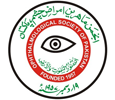ISSN 0886-3067



Volume No 36 Issue No 4
Co-relation of Myopia with the Use of Smart Phones and Outdoor Activities
Purpose: To determine the frequency of myopia among children and to find out the role of smart phone usage and outdoor activities in myopia development and progression. Study Design: Descriptive cross-sectional study. Place and Duration of Study: Ophthalmology department DHQ-UTH Gujranwala, from January 2019 to June 2019. Methods: After approval from the hospital ethical committee and informed consent from each participant, a descriptive cross-sectional study was carried out with a sample size of 250 patients. Routine ophthalmic examination was carried out, data was recorded on proforma, and daily usage of smart phones and weekly outdoor activity in hours along with school grade, family history and previous history of using refractive glasses was also determined and documented. Data was analyzed using SPSS v.20 Results: 250 patients were included in this study, out of which 142 (56.8%) were male and 108 (43.2%) were female. Mean age was 10.1 ± 2.45 years. Mean outdoor activity was 0.95 ± 0.98 hours per week while mean daily smart phone usage was 2.89 ± 0.93 hours. Pearson correlation coefficient for daily smart phone usage and UCVA was +0.297 (0.3) which showed a positive moderate association between two variables while the value obtained for UCVA and weekly outdoor activity was – 0.51 that depicted a negative strong association. Conclusions: In conclusion, myopia occurrence is higher among smart phone users showing a moderate positive correlation while outdoor activities reduce myopia prevalence and progression depicting strong negative correlation.
HTML Full Text | Complete PDF